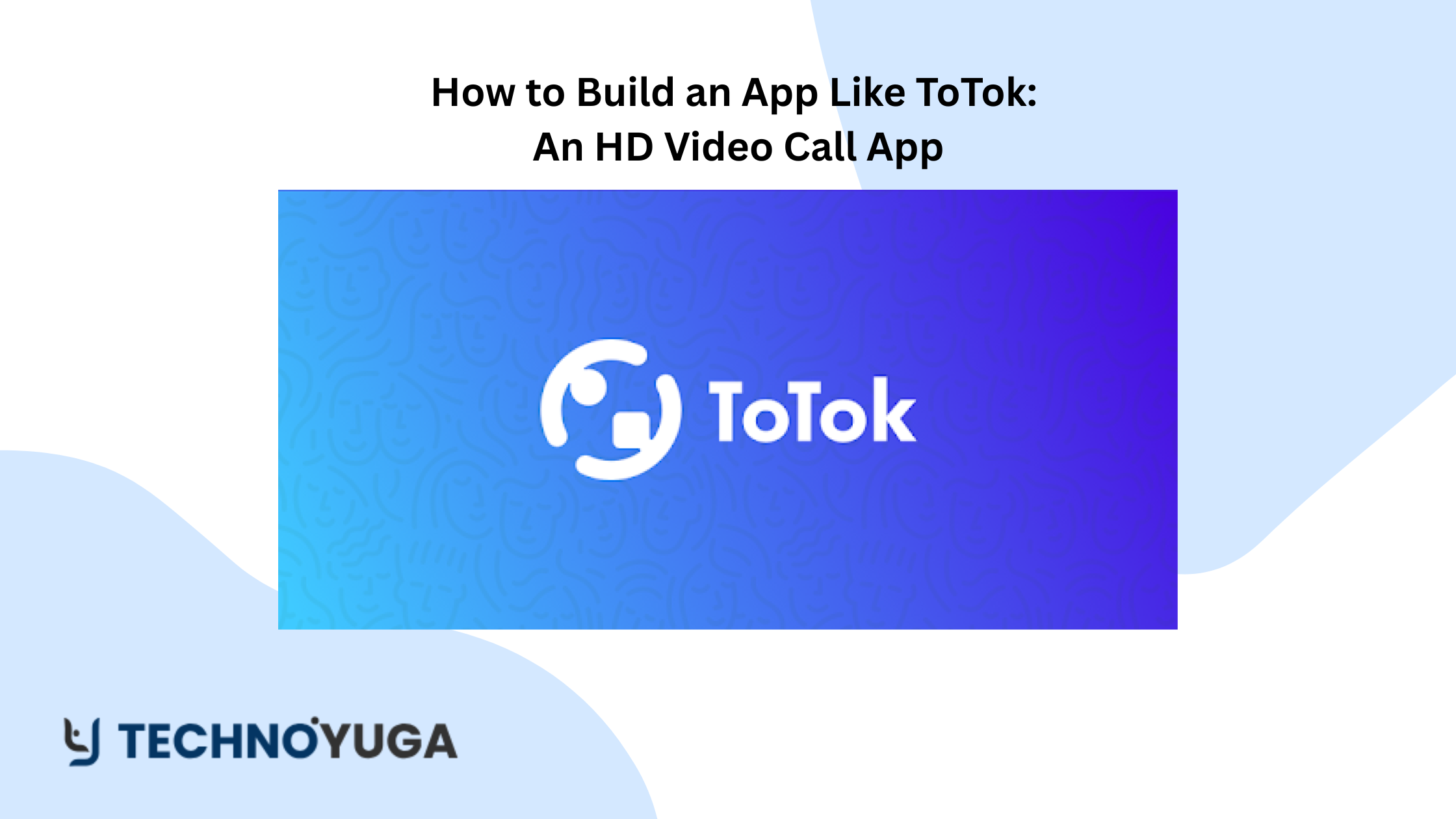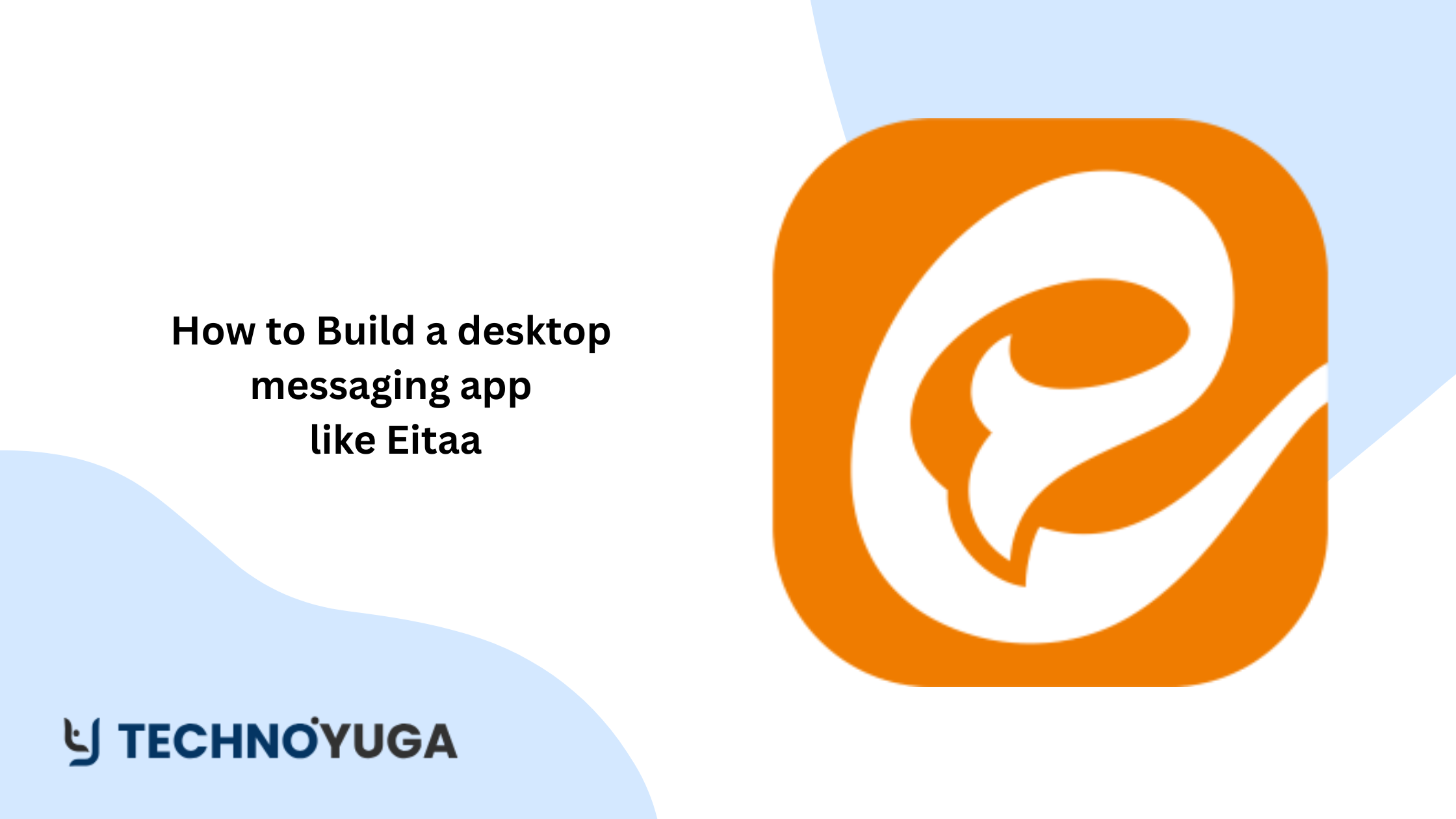Introduction
In today’s hyper-connected world, the demand for reliable and high-quality communication tools is growing rapidly. Apps like ToTok have gained massive popularity for offering smooth, high-definition video and audio calls, especially in regions like the Middle East where secure and unrestricted communication is essential. If you’re looking to build a video calling app like ToTok, you’re tapping into a market that’s both competitive and full of opportunities.
Whether you’re a startup, entrepreneur, or enterprise, this guide will walk you through everything you need to know to develop a video chat app like ToTok, from key features to choosing the best tech stack for a ToTok-like app. We’ll explore essential aspects of HD video call app development solutions, including cross-platform video call app development, performance optimization, end-to-end encryption, and how to make your product stand out as a ToTok alternative app.
If you’re wondering about the cost to develop an app like ToTok, or how to create an app that supports secure video calling across Android and iPhone, this article will cover it all. You’ll also get insights into choosing the right on demand app development company, understanding mobile app development costs, and how to hire dedicated developers for your project.
Let’s dive in and discover what it takes to build an app like ToTok for HD video calling that rivals the best in the business.
What are ToTok’s Core Features?
High-Quality Video and Voice Calls
ToTok is renowned for offering crystal-clear HD video and voice calling experiences, even on slower networks. The app uses advanced codecs and real-time communication protocols to ensure minimal latency and jitter, allowing users to engage in seamless conversations. Adaptive bitrate streaming adjusts quality based on available bandwidth, delivering a consistently smooth performance. Users across different geographies can connect with reliable clarity, making it ideal for both personal and professional use. This feature is the foundation of any successful video chat app and should be a top priority when planning to develop a video calling app like ToTok.
Group Calling Functionality
One of the highlights of ToTok is its robust group calling support. Users can host video or voice calls with multiple participants simultaneously, fostering better communication for families, friends, and even remote teams. The app ensures synchronized audio and video, regardless of the number of participants. Intelligent stream prioritization ensures that the active speaker or main presenter receives the most bandwidth. This functionality requires efficient backend architecture and a stable real-time communication engine, which is crucial when you want to build an app like ToTok for HD video calling with group interactions.
Instant Messaging and File Sharing
ToTok combines video calling with real-time messaging, allowing users to send texts, emojis, images, and videos during or outside calls. This integration makes the app more versatile and user-friendly. The file-sharing capability enhances collaboration by allowing users to exchange media and documents quickly. These features are end-to-end encrypted to maintain user privacy and data security. For developers looking to create an app like ToTok, adding a strong messaging and sharing feature set can significantly improve user retention and engagement, making the app more than just a video communication tool.
Contact Syncing and Inviting
ToTok simplifies user onboarding by syncing with the phone’s contact list. It automatically detects which contacts are already on the app and allows users to invite others via SMS, email, or social media. This seamless integration improves discoverability and enhances user growth through organic referrals. The app respects privacy by requesting permissions and managing user data securely. If you’re aiming to develop a video chat app like ToTok, incorporating smart contact syncing and referral features can accelerate user acquisition and improve the overall user experience from the first launch.
Cross-Platform Compatibility
ToTok offers smooth functionality across both Android and iOS platforms, providing a consistent experience regardless of the device. Users can start a call on one device and continue on another, ensuring flexibility and convenience. The app’s responsive design and native-like performance are a result of using the right frameworks and development tools tailored for each platform. When planning cross-platform video call app development, maintaining UI/UX consistency and performance across devices is essential. For businesses considering ToTok-style app development, ensuring cross-device and cross-platform interoperability can broaden the user base and boost adoption rates.
End-to-End Encryption and Privacy Protection
Security is a cornerstone of ToTok’s architecture. It uses end-to-end encryption to protect all forms of communication, including calls, messages, and shared files. This means that only the sender and receiver can access the content. The app complies with international privacy standards and implements features like two-factor authentication and secure data storage. When looking to build a secure video calling app like ToTok, focusing on privacy features not only builds trust but also ensures compliance with regional data protection laws such as GDPR. Security-first development is critical in gaining a competitive edge in the communication app market.
10 Key App Development Steps to Build an App Like ToTok: An HD Video Call App
Planning and Market Research
Before starting development, thorough planning and market research are crucial. This phase involves analyzing the current market, identifying competitors, and understanding your target audience. Look into what makes apps like ToTok successful and where there may be room for improvement. Define your app’s unique value proposition—will you focus on ultra-low latency video, security, or regional accessibility like the Middle East market? It’s also essential to validate your idea by gathering user feedback through surveys, interviews, or focus groups. Create detailed user personas and map out potential use cases. This information helps shape your product roadmap, prioritize features, and minimize risks during development. A clear project scope and business model—whether freemium, subscription-based, or ad-supported—should also be determined here. Aligning your vision with business goals and user expectations ensures a strong foundation for the app’s success.
Choosing the Right Technology Stack
Selecting the best tech stack is a key decision that directly affects app performance, scalability, and development time. For frontend development, consider using Flutter or React Native for cross-platform apps, or native tools like Swift for iOS and Kotlin for Android. For the backend, scalable and real-time capable technologies like Node.js, Go, or Python (Django) are ideal. Incorporate WebRTC for seamless video and voice communication, and Socket.IO for real-time messaging. Use cloud platforms like AWS or Google Cloud for hosting, with support for load balancing and media streaming. Firebase can be useful for notifications and real-time data sync. For data storage, MongoDB or PostgreSQL are excellent options. When building a ToTok-style app, especially one focused on the Middle East region, ensure localization and regional compliance. Choosing the right stack not only reduces mobile app development cost but also sets you up for efficient maintenance and future updates.
UI/UX Design and Prototyping
A smooth, intuitive user experience is critical for the success of any HD video calling app. Your design should prioritize ease of navigation, accessibility, and responsiveness across devices. Start by sketching wireframes for key screens—login, contacts, chat, call, and settings. Then move into creating high-fidelity prototypes using tools like Figma or Adobe XD. Focus on a clean and minimal design language that supports multi-language interfaces if you’re targeting diverse markets like the Middle East. Make sure the interface allows quick access to core features such as instant call initiation, video quality adjustment, and contact sync. Prototyping allows you to gather early feedback and make UX adjustments before development begins. Don’t overlook animations and transitions that make the user journey more engaging. Prioritizing design from the outset results in a secure video calling app like ToTok that users find easy and pleasant to use.
Backend Development and Architecture
A robust backend is essential for supporting real-time features, handling concurrent users, and managing data securely. Begin by creating a scalable architecture using microservices or a modular monolithic approach. The backend should handle user authentication, session management, call signaling, and media routing. Real-time protocols like WebRTC combined with STUN/TURN servers ensure high-quality video and voice transmission. Integrate secure APIs for chat, notifications, and media sharing. Use load balancers and autoscaling to manage sudden traffic spikes, especially during peak usage. Encrypt all user data in transit and at rest to ensure security. For message storage and retrieval, use NoSQL databases like MongoDB for flexibility. Integrate admin panels for managing user behavior, reporting abuse, and analytics. Whether you choose AWS, Azure, or GCP, leverage cloud-native tools for backups and performance monitoring. This architecture lays the groundwork for a ToTok clone app development project that is reliable and secure.
Frontend Development and Integration
The frontend of your app is where user interactions happen, so it must be responsive, efficient, and appealing. Implement the UI components based on your prototypes using the chosen technology stack—React Native or Flutter for cross-platform, or Swift/Kotlin for native apps. Integrate the video call SDK (like Agora or Twilio) and test each feature including call initiation, camera toggles, and screen sharing. Connect the frontend with backend APIs for real-time chat, push notifications, and file sharing. Also, integrate device permissions (microphone, camera, contacts) with smooth prompts and fallback handling. Ensure the app is optimized for various screen sizes and orientations. Use local caching strategies to improve loading speed and maintain some offline functionalities. With a strong focus on HD video calling app development, your frontend should deliver smooth streaming and quick responses, replicating the user experience of a secure video calling app like ToTok.
Security and Privacy Implementation
Security is a cornerstone of any communication app. To gain user trust, you must build with privacy-first principles. Start by implementing end-to-end encryption for all calls and messages using protocols like DTLS and SRTP for WebRTC. Secure user data at rest and in transit using AES-256 encryption and TLS. Add multi-factor authentication and biometric login for extra layers of protection. Privacy features like disappearing messages, screenshot detection, and manual session termination can give users more control. Ensure compliance with regional laws such as GDPR or UAE’s data regulations if targeting the Middle East. Monitor for suspicious activities and integrate firewalls and anti-DDoS protections. Role-based access control for admins and developers should also be in place to prevent unauthorized data access. When you develop audio and video call app like ToTok, robust security not only safeguards users but also strengthens your app’s credibility and retention.
Integration of Advanced Features
To stand out from the competition, incorporate advanced features beyond basic calling. Add group video calls, screen sharing, and background blur or filters to enrich the experience. Real-time voice translation and transcription can be valuable for international communication. In-app file sharing, contact syncing, and offline message queuing enhance usability. Consider implementing AI for call quality adjustments based on network conditions. Voice commands and smart reply suggestions can also increase user engagement. Enable call recording (with consent) and cloud backups for business use cases. Integrate presence indicators, typing notifications, and custom emojis to mirror modern messaging expectations. Provide personalization features like theme selection and privacy controls for call visibility. These additions not only elevate your app from being just a ToTok alternative app development project but position it as a smart, user-centric platform tailored for global and regional needs.
Testing and Quality Assurance
Thorough testing ensures that your app runs smoothly under real-world conditions. Conduct unit testing for individual components, integration testing for modules, and end-to-end testing to simulate real usage scenarios. Prioritize performance testing to evaluate how the app handles simultaneous video calls and user traffic. Run compatibility tests across various Android and iOS devices to eliminate device-specific issues. Use emulators and real devices to validate responsiveness, camera and mic integration, and permissions. Security testing should cover encryption protocols, session management, and vulnerability scans. Beta testing with a limited user group helps uncover usability issues and edge-case bugs. Gather feedback, monitor crash reports, and refine the app accordingly. Automated testing tools like Selenium and Appium can speed up the QA process. A rigorous QA phase is key to HD video call app development solutions that are stable, secure, and ready for scale.
Deployment and Launch Strategy
After final testing, prepare your app for deployment to Google Play and Apple App Store. Ensure compliance with platform guidelines, particularly for access to sensitive data like camera and microphone. Create optimized store listings with compelling descriptions, keywords, and visuals to support app store optimization (ASO). Set up backend infrastructure for monitoring, analytics, and bug tracking. Enable CI/CD pipelines for smooth future updates. Consider launching with a limited region or invite-only beta to manage initial feedback. Build a support channel for early users and prepare FAQs and tutorials. Engage in promotional activities such as influencer marketing or tech blog features to gain visibility. Monitor downloads, crash rates, and user retention from day one. A solid launch plan, especially for a ToTok-style app for Middle East region, helps generate buzz and collect meaningful data to improve your next version.
Post-Launch Maintenance and Scaling
Once the app is live, your focus shifts to maintenance and growth. Monitor app performance continuously using tools like Firebase, Datadog, or New Relic. Fix bugs and release updates regularly to improve usability and security. Analyze user behavior to identify which features are most used and where users drop off. Add features in response to user feedback and evolving market needs. Prepare your servers for scaling based on user growth, especially during marketing campaigns or in newly opened markets. Continue optimizing your codebase for performance and battery usage. Offer prompt customer support through chatbots or dedicated teams. Periodic security audits and compliance checks are vital. For long-term success, invest in marketing, partnerships, and possibly white-label solutions. Maintenance ensures that your mobile app development effort continues to deliver value while scaling effectively as a cross-platform video call app development project.
Conclusion
Building an app like ToTok requires strategic planning, the right tech stack, a focus on user privacy, and a seamless video calling experience. As the demand for HD video call app development solutions grows, launching a secure, cross-platform app with real-time features can position you strongly in both local and global markets. Whether you’re targeting the Middle East or a broader audience, your success depends on understanding user needs and delivering consistent performance. With the right development team or on demand app development company, you can create a scalable, privacy-focused alternative to ToTok. From iPhone and Android app development to deployment and maintenance, each phase needs dedicated effort and attention to detail. If you’re ready to build a video conferencing app with end-to-end encryption, now is the ideal time to invest in innovative features and user-first design. Partner with experts to ensure your ToTok-style app stands out in today’s competitive app landscape.
FAQs
How much does it cost to develop an app like ToTok?
The cost to develop an app like ToTok typically ranges from $25,000 to $100,000, depending on features, tech stack, platform, and whether you hire in-house or offshore developers. Advanced features and security protocols can raise the price further.
Which tech stack is best for HD video calling app development?
A strong tech stack includes WebRTC for video calls, React Native or Flutter for cross-platform apps, Node.js or Python for backend, and Firebase or AWS for cloud and notifications. This combination ensures performance, scalability, and low latency.
Is ToTok banned in some countries? Should I be concerned?
Yes, ToTok has faced bans over data privacy concerns. If you’re building a ToTok alternative app, ensure full compliance with privacy laws like GDPR and implement strong encryption and transparent data policies to avoid similar issues.
Can I monetize a ToTok-style app?
Yes, you can monetize via freemium models, in-app purchases, subscriptions, or ads. Offering a free basic version with premium features like group calls or cloud recordings can attract users and generate recurring revenue.
How do I make my video calling app secure?
Use end-to-end encryption protocols like DTLS-SRTP, implement secure logins (MFA or biometrics), encrypt all stored data, and follow strict backend security practices. Regular audits and compliance with privacy regulations are essential for a secure video calling app like ToTok.





